A while back I emailed Gamblin asking them about a solution for my dilemma of finding a solvent-free, faster-drying palette. They were super helpful and said if I just use their products then all my problems would vanish like refined mineral spirits into the air. I would lose weight, I’d be fun, sexy, and my life would be one long beer commercial.
Then they sent me a super helpful list of the drying rates of all of their oil colors. I found that I could actually build a palette out of colors that dry faster naturally. And if I were to add walnut alkyd medium, I could have everything dry overnight, without the aid of solvents or other drying agents.
I also spoke by phone with the elusive M. Graham about his mysterious walnut alkyd medium. He told me it was safe. In fact, it was “salad grade” safe. You could literally eat it. Though he didn’t recommend that because it had a “mild laxative effect.”
I see. Haha. Well, Mr. M. Graham, I’m not asking if I can eat your products. I want to paint with them and your little jokes are not very funny.”
But so far he has been right (not about the laxative part. I haven’t tried that yet. Not saying I haven’t snuck some into other people’s food, just that I haven’t personally consumed any yet.) But he was right about the overall safety of the product. I have been using it for about a year now and have had no adverse effects. And surprisingly it works as advertised.
So the secret so far is this:
Build a palette based on colors that all dry in under 4 days, and walnut alkyd medium. The walnut alkyd medium speeds the drying time up a little bit faster than 2x the usual speed, depending on the humidity in the air.
If you want to speed it up further, you can place the paintings under a car windshield, or a heat lamp. Or light it on fire. But you need to be careful with all of those.
For sky in the Ents piece, I am using these Gamblin oil colors:
Pthalo blue – (4 days to dry)
Cerulean Blue Hue – (4 days to dry)
Payne’s Gray (4 days to dry)
Titanium-Zinc White (3 to 4 days to dry)
With the medium it probably took about 24 hours until it was touch dry.
The reds are a bit more tricky, as most reds are very long drying colors. (Alizarin, the Cads and the Quinacridones are all at least 6 day dryers) Which mean you are stuck with Iron Oxide based reds. Still, you can get a surprising range with them.
For Smaug I have used:
Raw Sienna (4 days)
Brown Pink (4 days)
Hansa Yellow Deep (4 days)
Transparent Yellow Earth (3 days)
And these all dried very quickly. Later on, when I don’t need as many layers, I can switch into a broader palette and take advantage of Alizarin’s cooler tones. But the above colors, which all dry overnight, are perfect for these early color layers.


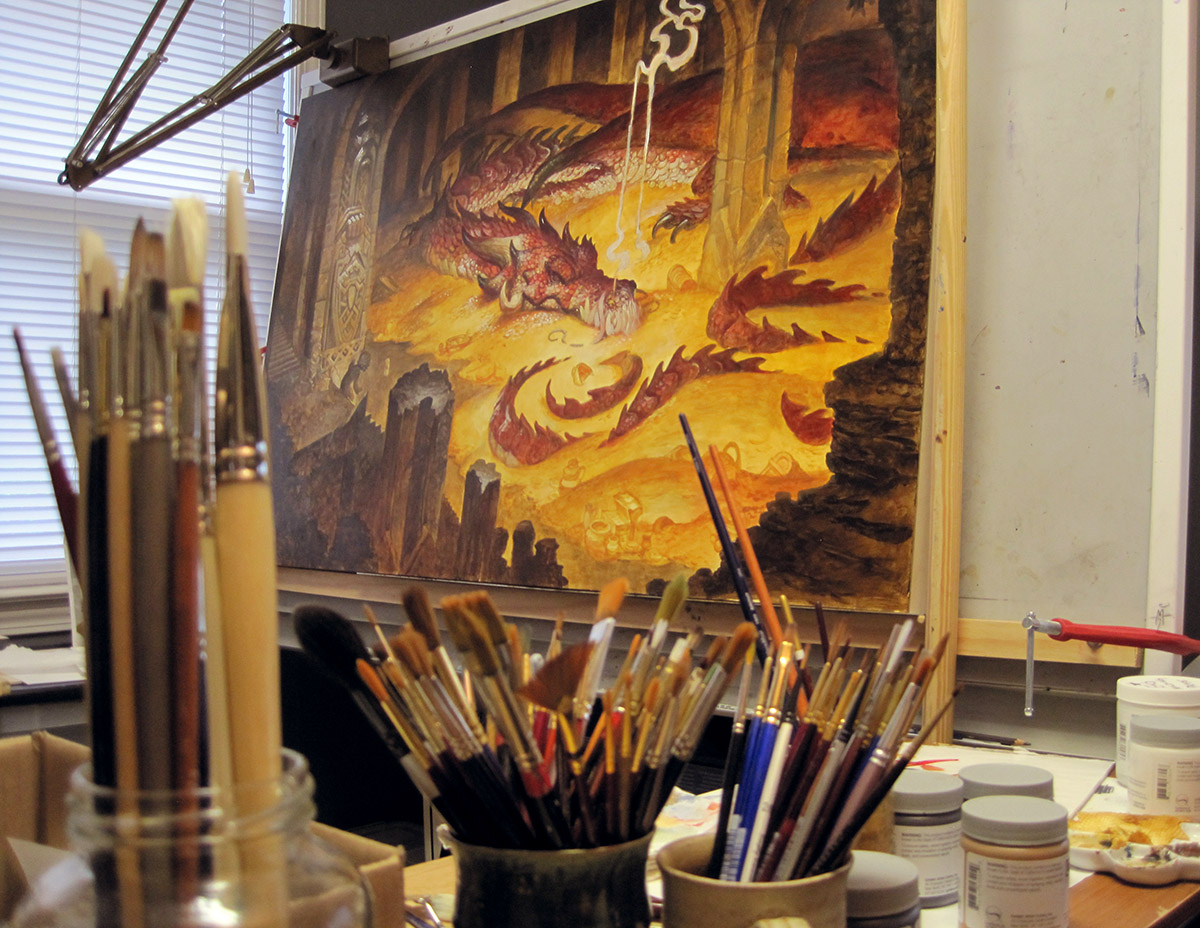
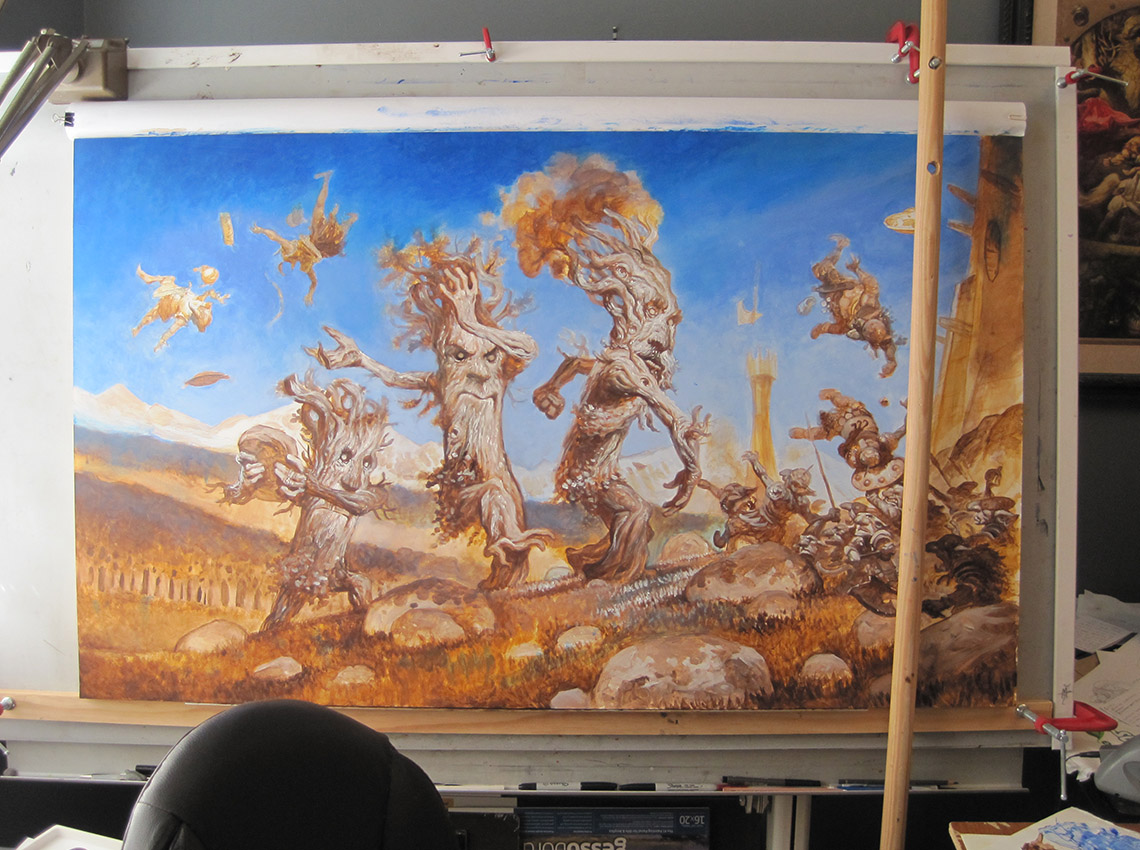
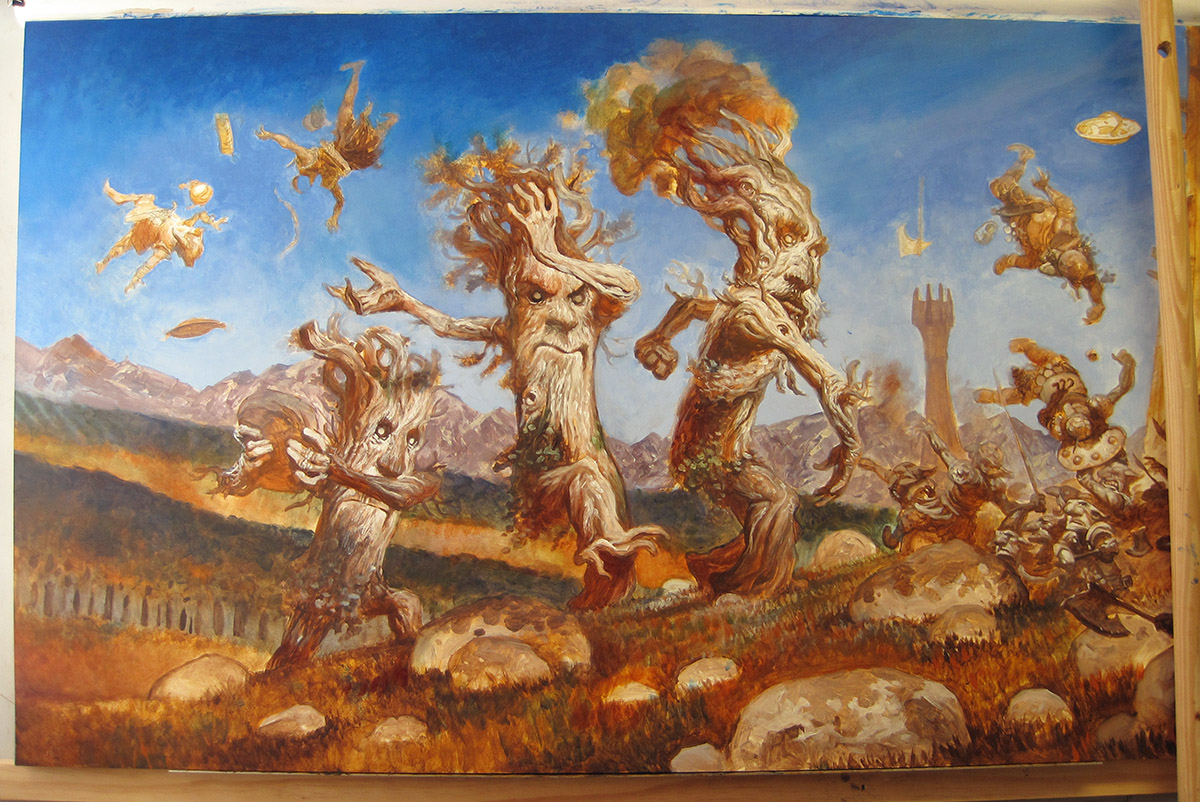
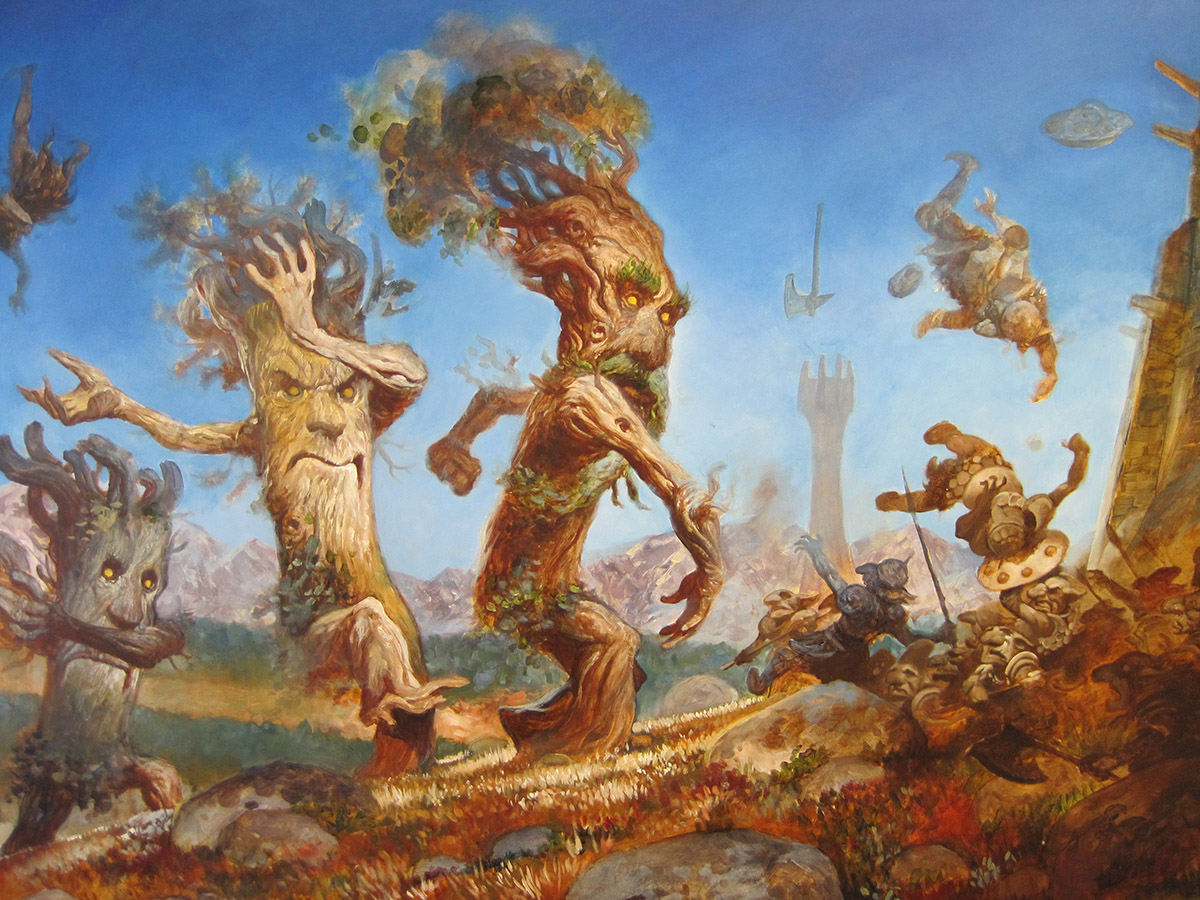

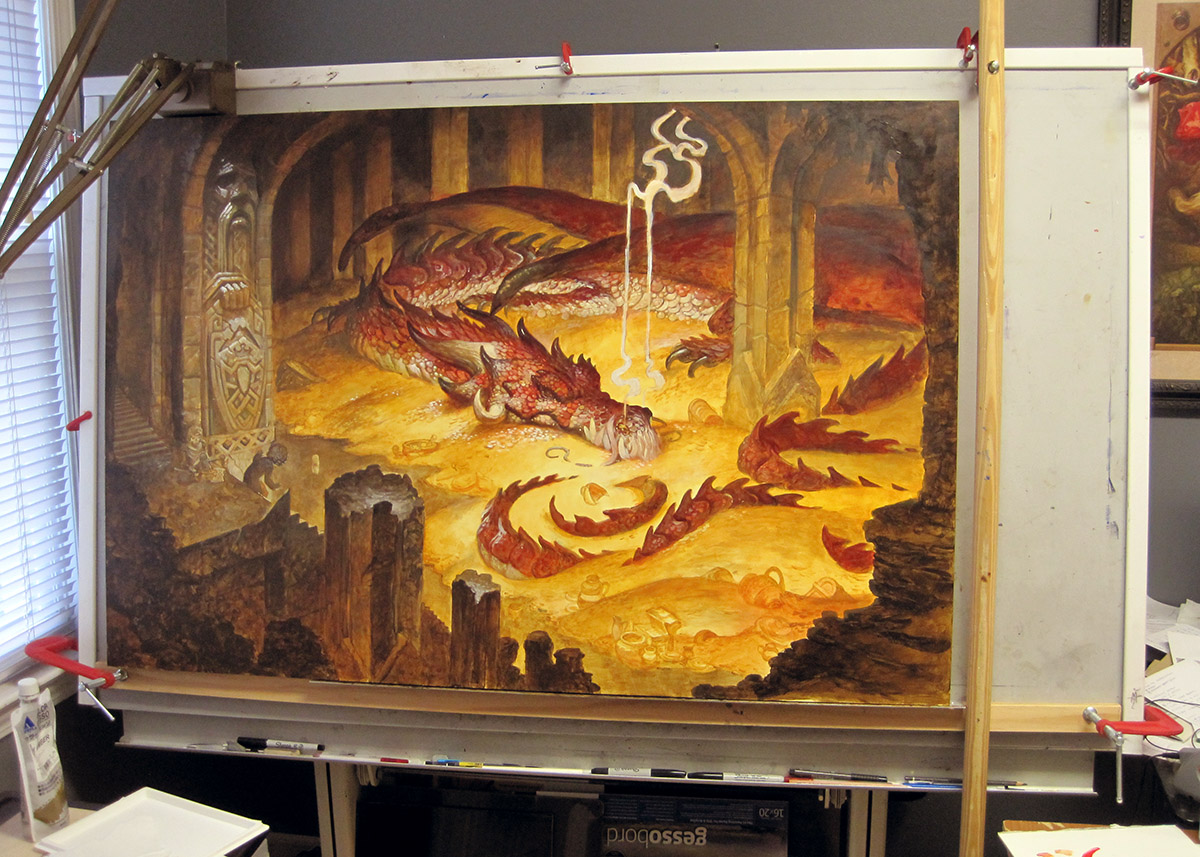
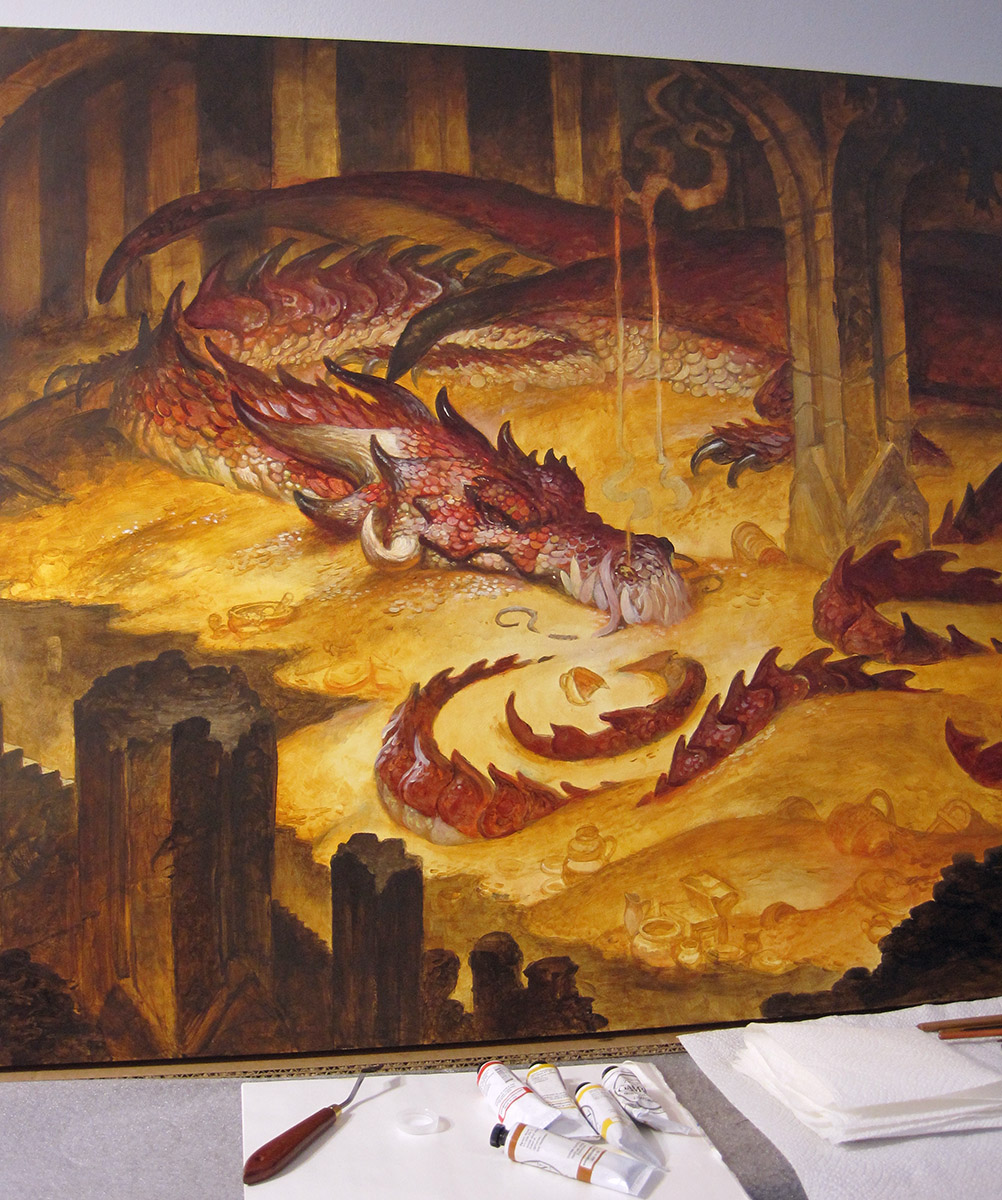

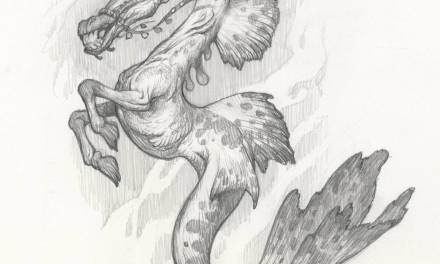
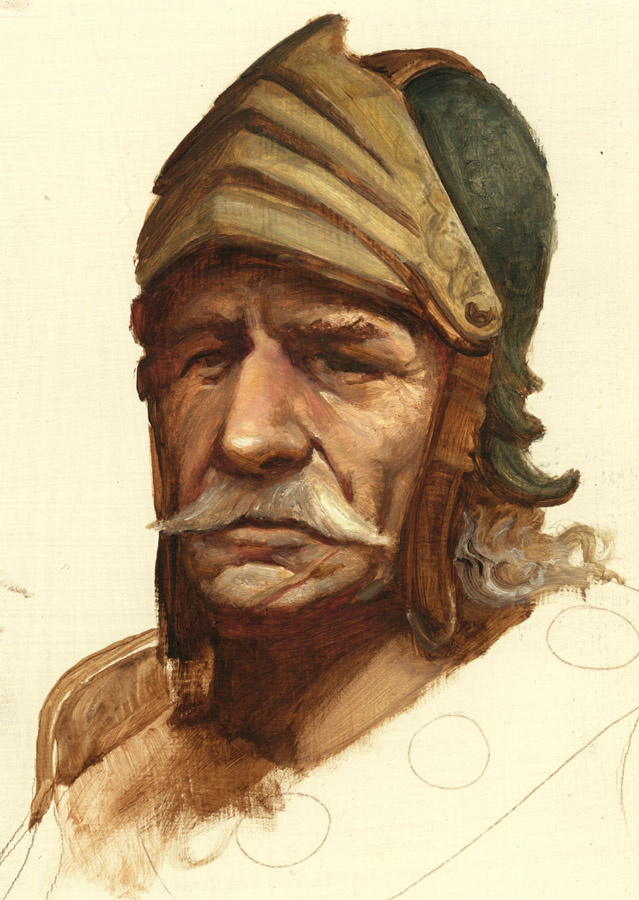
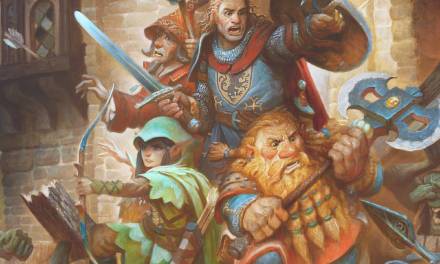

Dude, we are working on the EXACT same drafting table! Does yours have the hydraulic lift too?
They look amazing Justin-it's wonderful seeing you working in oils! Gotta love those Oregon paint makers (wizards really);)
Hey Justin I totally need to try this. The reds even without the cadmiums and alizarin colors on the dragon look fantastic. Sometimes having limits forces one to make new and better solutions. I was wondering if you could post the list of the drying rates of all of their oil colors- or a link to it on Gamblins site? Also why did you choose Gamblin paint over other brands and I was curious why you didn't choose to use any Alycids oils? Thanks for the post very VERY helpful.
Hi Justin, I've been using water mixable oils for a few years, and I'd like to get back into real oils but don't like using all the solvents. How are you able to clean your brushes in this non-solvent style, are you using the medium to clean your brush or are you just wiping them out?
I love this post.
Also, Justin, did Gamblin mention their FastMatte alkyd colors? They aren't everybody's style, but mixing a little in with your regular oil colors would also speed your drying time.
The paintings are looking gorgeous! (I really dig iron-based reds. Cadmiums and Quins are cool, but I find it too easy to accidentally go overboard with them.)
These are looking pretty sweet! I have been using little to no medium at all (ala Scott Waddell), and my paint dries in about 6 to 8 hours. I live in Chicago and when it gets hot here, I can't keep the paint wet long enough! Also, it seems that lead white has been completely forgotten from so many palettes. White is the most used pigment, and we all look to the old masters, but we use titanium which wasn't widely used by painters until roughly 70s.
Try REAL lead white in the over-painting stage with a small to medium round – I'm sure you'll love it. It makes oil painting more like oil drawing.
A drop or two of clove oil mixed into your paints will slow the drying time (clove oil is 'edible safe' (some people will use it on a ham, I chew clove gum). I also keep my palette in the fridge. Clove oil, fridge, and seran wrap over your paint piles will keep your palette paints from drying for some time. Painting thickly on your canvas will make the paint dry slower. You can find essential oils like clove in a modern apothecary store, some drug stores, some grocery stores. (To speed drying time I use Liquin or cobalt drier… but don't eat those).
Justin, thanks for the information regarding the drying times and walnut alkyd, it's very helpful! I live in a very humid climate, but anything that can even make a dent in drying time could help me get back to painting with oils.
How do you go about cleaning your brushes with this solvent-free method?
A drop or two of clove oil mixed into your paints will slow the drying time (clove oil is 'edible safe' (some people will use it on a ham, I chew clove gum). I also keep my palette in the fridge. Clove oil, fridge, and seran wrap over your paint piles will keep your palette paints from drying for some time. Painting thickly on your canvas will make the paint dry slower. You can find essential oils like clove in a modern apothecary store, some drug stores, some grocery stores. (To speed drying time I use Liquin or cobalt drier… but don't eat those). ps. already posted this but was supposed to be a reply to white whale, don't know if that makes a difference, I'm not too good with computer/internet stuff.
Haha yep! A local artist here was cleaning out his garage and getting rid of his old tables. I got 3 of these plus a light table for $45.
Hey Matt, I can't post the list as it is because of its format, and I haven't had time to manually enter it into blogger yet. If you email me I will pass it on to you!
Also, I just like the consistency of Gamblin's oils. And they have never given me any trouble, so I have just stuck with them. As for the alkyds, they work great, but whatever they are using in there to keep them smooth still gives me headaches and whatnot. I think I just developed a hypersensitivity to that stuff by not being careful with it all in college.
You don't need any solvents for cleaning! Just use a little walnut oil to loosen any heavy paint in the brush and wipe it out on paper towels. Then use a plain old bar of soap and a glove and clean the brush out under running water. (A trick learned from Petar Meseldzija) It works perfectly. No solvent needed.
Yes, I actually have a lot of the Fastmattes and do mix them in occasionally, however, I find that they dry a little too fast sometimes and I always feel the need to use OMS to keep them workable. Which then gets me back into using solvents… So I tend to just stick with Walnut Alkyd Medium, which for whatever reason, never gives me any trouble.
But if you don't have any health issues with solvents, then they are pretty sweet!
I used to use Holbein's lead white for my whites a great deal. It is a much nicer white than titanium/zinc. It does feel a bit nicer to work with I think.
But if possible I'd like to work with a very low toxicity palette. And lead can be pretty bad as far as that goes, so I have left it out. (I tend to make a mess when I paint, and get it all over my hands sometimes….)
You don't need any solvents for cleaning – Just use a little walnut oil to loosen any heavy paint in the brush and wipe it out on paper towels. Then use a plain old bar of soap and a glove and clean the brush out under running water. (A trick learned from Petar Meseldzija) It works perfectly. No solvent needed.
Smaug looks perfect in this illustration, your technique is amazing. the colours so beautiful….incredible
see you later
What?! That is a freaking steal!
What maker is it?
What's the ratio of the walnut oil and the oil paint do you prefer in your mixes?
I just happen to see this post before my package from Blick had shipped.. so I had them throw a bottle in my box.
🙂
Hey Dylan,
I tend to use very little of the walnut oil. Just a slight amount on the palette and the brush. Only as much as is needed to make it a little more fluid.
Ok thanks Justin!
and another thanks for sharing your process!